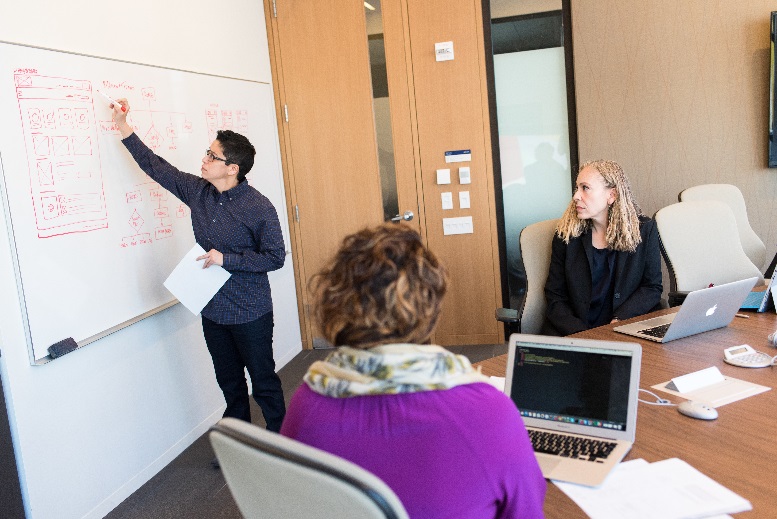Main Menu

Last month, EvidenceConneKTion introduced the concept of implementation science laboratories (IS labs). Mainly, we focused on the mutual benefits that IS labs can bring to both health research and health system communities. Most importantly, IS labs bring together the knowledge and skills of health system employees and academic researchers to improve the likelihood of successful healthcare changes. Implementation practitioners have critical, sometimes tacit, knowledge of health care system dynamics. Meanwhile, implementation scientists have research expertise and can contribute thinking required for theory-based project planning. Both types of knowledge are essential for successful implementation project planning.
But really, do highly motivated implementation scientists or practitioners need a formal IS lab to create high-quality implementation projects that incorporate both scientific and practical/tacit knowledge? There are certainly wonderful collaborations that underpin many high-quality implementation projects. Without all of the implementation collaborations already underway, there would not be a field of implementation science! So what do IS labs add to the mix? In this week’s blog post, we discuss how IS labs add value to current implementation practices.

To really understand IS labs, we first have to clarify the difference between implementation and implementation science.
In health care, implementation is the act of creating and applying road maps to use new evidence to change practice. This is the work that implementation practitioners are tasked to do in order to improve patient outcomes in their local contexts.
Implementation science, as defined by the National Institute of Health, is “the study of methods to promote integration of research findings and evidence into healthcare policy and practice.” In other words implementation science is the study of what works, when, why, how, and for whom. This is the theory-driven intervention design and evaluation of new practices that researchers conduct.
Implementation science activities are all geared towards helping researchers understand why or how an implementation approach creates the intended change (or not!). One of the central activities required to make this knowledge is evaluation of the implementation strategy. All implementation projects should include an evaluation component. Traditionally, teams that design, pilot, and evaluate high-quality projects are academic-health system collaborations, much like the collaborations that would be facilitated by an IS lab. However, without an IS lab infrastructure to support ongoing collaboration, projects suffer from common pitfalls:
They tend to be one-off studies, forcing teams to undertake a massive amount of legwork for each separate project.
This leg work requires enormous amounts of time and skill for activities such as building partnerships, negotiating agreements between academic institutions and healthcare systems, and conducting studies.
Because partnerships disband after each pilot, there is no mechanism to communicate lessons between implementation research projects. This not only drastically limits the potential for the people involved to reflect and learn, but means that often actors in the system repeat mistakes from project to project.
IS labs can be defined both structurally and by process. In one sense, an IS lab can act as an infrastructure that facilitates collaborative research projects embedded within a healthcare system. This infrastructure can help those involved to develop and sustain research partnerships, identify promising projects, and collect and share lessons learned with those working in the health system and with the broader implementation science community.

In another sense, an IS lab can enable people to create processes to advance theory in implementation science. Leadership in IS labs can identify research and practice priorities and develop standardized evaluation measures and mechanisms. In this way, projects developed with IS labs can be coordinated and designed in ways that uncover comparative effectiveness of different implementation methods.
As an infrastructure and a process, an IS lab can contribute to broader learning health systems in ways that single-study research partnerships, no matter how good they are, simply cannot.
What exactly is a learning health system and how would an IS lab fit into one? Join us in our next EvidenceConneKTion to hear about the power of learning health systems and the potential impact of IS labs.
Let us know how you want to stay connected


 News + Events
News + Events

 Patient Partner Research Opportunities
Patient Partner Research Opportunities

 I agree to receive occasional emails from AbSPORU.
I agree to receive occasional emails from AbSPORU.University of Calgary Foothills Campus
3330 Hospital Dr NW
Calgary, AB T2N 4N1
University of Alberta North Campus
Edmonton Clinic Health Academy (ECHA)
11405 87 Ave NW
Edmonton, AB T6G 1C9
The Alberta SPOR SUPPORT Unit operates on and acknowledges the lands that are the traditional and ancestral territory of many peoples, presently subject to Treaties 6, 7, and 8. Namely: the Blackfoot Confederacy – Kainai, Piikani, and Siksika – the Cree, Dene, Saulteaux, Nakota Sioux, Stoney Nakoda, and the Tsuu T’ina Nation and the Métis People of Alberta. This includes the Métis Settlements and the Métis Nation of Alberta. We acknowledge the many First Nations, Métis and Inuit who have lived in and cared for these lands for generations. We make this acknowledgment as a reaffirmation of our shared commitment towards reconciliation, and as part of AbSPORU’s mandate towards fostering health system transformation.
© 2025 AbSPORU